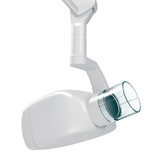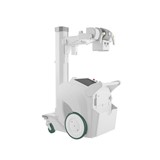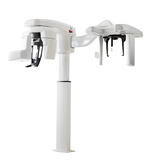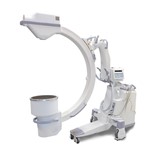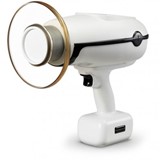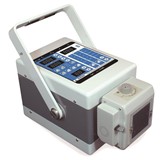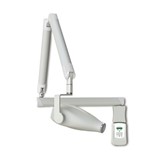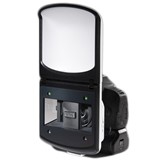Key Takeaways
- Pricing Range: The cost of CR/DR X-ray systems in Australia ranges from $30,000 for basic models to over $300,000 for advanced, fully-integrated systems.
- Types: CR (Computed Radiography) and DR (Digital Radiography) offer different technological advantages; DR systems are more expensive but provide faster imaging and better image quality.
- Key Factors: Pricing is influenced by factors such as image quality, brand reputation, additional features (e.g., software, detectors), and warranty.
- Maintenance: Regular servicing and calibration are essential for maintaining optimal performance and ensuring longevity, with annual costs ranging between $2,000 - $5,000.
- Compliance: The equipment must meet strict radiation safety standards in Australia, requiring relevant certifications and licenses.
- Financing: Equipment financing options such as leasing or loan financing can help manage costs, often with terms of 3-5 years.
Introduction
The purchase of a CR/DR X-ray system is a significant investment for any healthcare facility, whether a hospital, clinic, or imaging centre. With the rapid advancements in radiology technology, it's crucial to make an informed decision on which system best meets your needs, both clinically and financially.
This guide will walk you through the types of systems available, their prices, key factors to consider, and how to ensure you're compliant with Australian regulations. Additionally, we’ll provide tips on financing options, warranties, maintenance costs, and other critical considerations to help you make an informed decision.
Types of X-Ray Systems: CR vs. DR
1. CR (Computed Radiography) Systems
- Price Range: From $30,000 to $100,000 for entry-level to mid-range models.
- How it Works: CR systems use photostimulable phosphor (PSP) plates that are scanned after exposure to radiation. The image is then converted into a digital format.
- Advantages:
- Lower upfront cost compared to DR systems.
- Suitable for facilities transitioning from analog to digital.
- Disadvantages:
- Slower image processing time.
- Lower image quality compared to DR systems.
2. DR (Digital Radiography) Systems
- Price Range: From $80,000 to $300,000+, depending on features and brand.
- How it Works: DR systems use flat-panel detectors that directly convert X-ray data into a digital image. These systems are faster and provide higher-quality images compared to CR systems.
- Advantages:
- Faster imaging process (real-time imaging).
- Superior image quality and resolution.
- Increased workflow efficiency.
- Disadvantages:
- Higher initial cost.
- Requires advanced training for operators.
Factors Influencing X-Ray System Prices
When purchasing a CR/DR X-ray system, the price can vary significantly based on several factors. Here are the primary considerations:
1. Image Quality
- The resolution of the X-ray images plays a crucial role in the quality of diagnosis. Higher resolution systems tend to be more expensive.
- DR systems typically offer better resolution than CR systems, but at a higher cost.
2. Brand and Reputation
- Leading brands such as GE Healthcare, Siemens Healthineers, Philips, and Canon Medical typically offer high-quality systems but at a premium price.
- Smaller or less well-known brands may provide lower-cost alternatives but could have fewer features and limited support.
3. Features and Software
- Advanced software for image enhancement, 3D imaging, and workflow integration can increase the overall price.
- Wireless detectors and integrated PACS (Picture Archiving and Communication Systems) also add to the cost.
4. Detector Type
- Amorphous silicon detectors offer superior image quality and efficiency but can be more expensive than amorphous selenium detectors or older technologies.
5. Warranty and Support
- Systems that include extended warranties or service agreements will generally cost more upfront, but they can reduce long-term maintenance costs.
CR/DR X-Ray System Maintenance and Operating Costs
1. Maintenance Costs
- Annual Maintenance: Expect to pay $2,000 to $5,000 annually for calibration, servicing, and repairs.
- Consumables: For CR systems, PSP plates need to be replaced every 2-3 years. DR systems may require replacement of detectors or batteries every 5-7 years.
2. Operational Costs
- Energy Usage: X-ray systems consume significant power. Energy-efficient systems can reduce operational costs over time.
- Software Updates: Some systems require periodic software updates, which may incur additional costs.
Financing Options for X-Ray Systems
Purchasing a CR/DR X-ray system outright may not be feasible for all facilities, but there are several financing options available:
1. Leasing
- Operating Lease: Lower monthly payments, with the option to return or upgrade the system at the end of the lease term.
- Finance Lease: The equipment is purchased through the lease, allowing for ownership after the term ends.
2. Loan Financing
- Healthcare providers can take out equipment loans to cover the full cost of the X-ray system. Loan terms generally range from 3 to 5 years.
- Interest rates for equipment financing in Australia typically range between 5-7%.
3. Government Grants
- Some Australian states offer grants or subsidies for purchasing medical equipment. Researching these opportunities could save you money on your initial purchase.
Compliance and Certification Considerations
In Australia, CR/DR X-ray systems must meet specific regulatory standards set by ARPANSA (Australian Radiation Protection and Nuclear Safety Agency) and Australian Standards (AS/NZS 3200). Compliance ensures that the equipment is safe to use and meets the required radiation protection and operational standards.
1. Radiation Safety Standards
- Systems must be certified to ensure minimal radiation exposure to both patients and staff.
- Quality assurance (QA) tests and radiation dose calibration must be performed regularly.
2. Certification
- The system must be certified by the Australian Register of Therapeutic Goods (ARTG), which ensures that the equipment meets national health and safety standards.
Common Questions About CR/DR X-Ray Systems
1. What is the difference between CR and DR X-ray systems?
- CR systems use a photostimulable phosphor (PSP) plate for image capture, which is later scanned and converted into a digital image. DR systems use flat-panel detectors to directly capture digital images, providing better image quality and faster processing.
2. Are CR/DR X-ray systems covered by insurance?
- Yes, many insurance policies will cover the purchase of X-ray systems, but it's essential to check with your provider to confirm the coverage.
3. How often should the system be serviced?
- Regular servicing should be carried out at least once a year to maintain optimal performance and ensure safety. Calibration and preventive maintenance can help avoid costly repairs later on.
4. What is the expected lifespan of a CR/DR X-ray system?
- With proper maintenance, a CR/DR X-ray system can last between 10 to 15 years. However, technological advances may prompt upgrades before the system reaches the end of its lifespan.
Conclusion
Purchasing a CR/DR X-ray system in Australia requires careful consideration of factors such as pricing, type of system, maintenance, and financing options. It's essential to balance image quality, system features, and total cost of ownership when making your decision.
Be sure to account for compliance requirements, warranty support, and long-term costs to ensure you’re making a sound investment. With the right system, your practice or hospital can improve diagnostic accuracy, enhance patient care, and streamline workflow.
For the best outcomes, always conduct thorough research and consult with suppliers who offer comprehensive after-sales support.






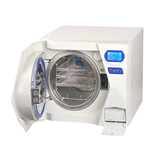
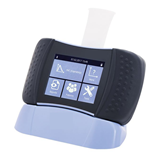
-160x160-state_article-rel-cat.png)










